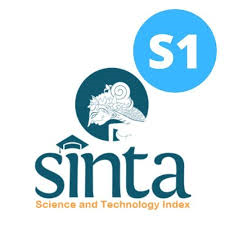GEOGRAPHIC INFORMATION SYSTEM (GIS) WEB SERVER FOR BIODIVERSITY INFORMATION SYSTEM
Abstract
Keywords
Full Text:
PDFReferences
BATTRICK, B. 2006. The Changing Earth, ESA Publication Division, The Netherlands.
BRADLEY, C. R., THOMAS, R. L., LOUIS, T. S.,JESSLYN, F. B., JAMES, W. M. & DONALD, O. O. 1994. Designing Global Land Cover Databases to Maximum Utility: The US Prototype. Environmental Information Management and Analysis: Ecosystem to Global Scales. Taylor & Francis,London. Pp. 299 - 314.
ESRI (Environmental Systems Research Institute), Geospatial Service-Oriented Architecture (SOA), an ESRI White Paper. Retrieved June 2007 from: http://www.esri.com/library/whitepapers/pdfs/geospatial-soa.pdf.
GOODCHILD, M. F. 1993. Sharing Imperfect Data, Sharing Geographic Information. New Brunswick, New Jersey. Pp. 363 - 374.
JOHN, J. K. & DONALD, L. P. 1994. Global Environmental Characterization: Lessons from the NO-AA-EPA Global Ecosystems Database Project.Environmental Information Management and Analysis: Ecosystem to Global Scales. Tailor & Francis, London. Pp. 315 - 327.
LETCHER, T. 2009. Climate Change, Observed Impacts on Planet Earth. Elsevier, The Netherlands.
PETERSON, M. P. 2005. Maps and the Internet. Elsevier, The Netherlands.
POLLOCK, R. J. & MCLAUGHLIN, J. D. 1991. Databased management system technology and geographic information systems. J. of Surveying Engineering 117 (1): 9 - 26.
SUNARNO, B. & RUGAYAH. 1992. Flora Taman Nasional Gede Pangrango. Herbarium Bogoriense, Puslitbang Biologi - LIPI, Bogor.
YAHARA, T. 2009. Climate change, biodiversity loss and challenges of the Asian conservation ecology program. The 1st International Symposium on Aquatic Environment and Biodiversity Conservation. The Lake Taihu Basin. Shanghai-China.
Refbacks
- There are currently no refbacks.









